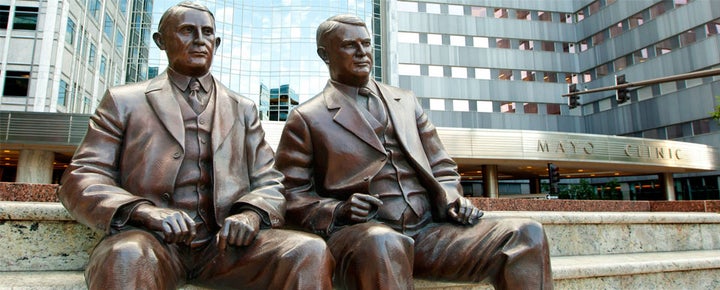
When I was a young, sassy, eager young woman, I was fired by the Mayo Clinic.
I was devastated. I worked two years to get the job - interviewed for six months - celebrated when I was hired by buying a house in Rochester, Minnesota.
I was with them for eight months and loved the work, adored my colleagues.
But I was flawed, and they knew it.
I couldn’t get to my cubicle on time. I couldn’t sit still during long, purposeless meetings.
I resented the dress code, the deportment code, the high-energy mandate for all staff.
More than anything - I resented not being the most important person in the room.
“The needs of the patient come first.”
I was a mess.
Only eight months out of my nasty, long-term marriage, I needed more than Mayo could offer.
My little soul was battered - my frail self image smashed.
I needed a place to work, of course - but even more, I needed a place to heal.
Mayo Clinic was not about to deliver.
Their motto is - “The needs of the patient come first.” So much for my needs, huh?
No staff member at Mayo can escape the clear, undiluted message. Our call, as employees of the world-class medical center, was to put on our big girl pants and step into the fire.
No matter what our role, our responsibility was clear. We were there for others - not ourselves.

Six weeks new-staff training taught us to watch for people who needed our help; individuals who looked lost, confused or in pain.
Our first task was always to be alert - to approach people standing still, standing stiff, standing alone.
We learned to ask “May I help you?” and mean it.
We learned the purpose of the Mayo name tag was not to announce our grand titles but to assure patients they were in the presence of someone who could help.
Nowhere throughout the facility are staff, physicians, technicians more important than the patients at Mayo.
Prime parking spots are set-aside for patients and their families, and if a staff member slides her little VW Beetle into one of those slots, she will hear her name called out over the institution-wide intercom system;
“Kristine Holmgren - move your car from patient parking ramp, or it will be towed.”
If I knew then what I know now -
The decades help a sassy woman settle down.
Thank the great gods in heaven for the unfolding of the human mind - the ability to self-critique, forgive, and grow.
Today, I write for the theatre, tend my gardens and enjoy the wild opinions of my thirty-something daughters and their successful husbands.
My neighborhood in St. Paul is peppered with young girls who drop by for advice, and single mothers who rely upon my strategies for survival.
And the lessons of the clinic frame my dotage.
Sometimes, often times, most of the time, the needs of others come first.
To focus on the momentary hurt, the immediate disappointment, the fleeting fear and anxiety of today leads the sassy and the superficial to bleak, desolate places.
The clinic taught, and I retained the lesson; look around. See those who need direction. See those who have less than we have. Reach out and ask, “May I help you?”
Mean it.
